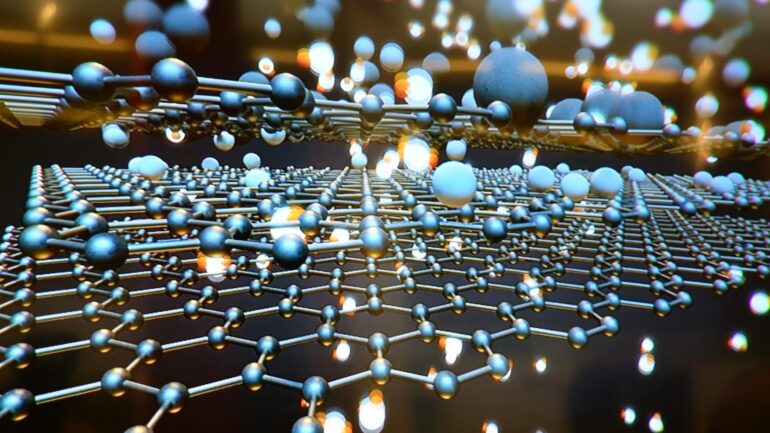TL;DR:
- Researchers have developed an AI system that automates the discovery of chemically stable 2D materials.
- The system, Material Transformer Generator (MTG), combines AI components to predict, optimize, and verify 2D compounds.
- MTG identified four novel thermodynamically stable 2D materials and two semi-stable candidates.
- This breakthrough accelerates 2D material discovery, expanding possibilities for advanced devices.
- Experimental validation remains necessary for practical adoption.
Main AI News:
The world of two-dimensional (2D) materials has long fascinated scientists and industry experts due to their exceptional electronic, optical, and mechanical properties. However, despite years of research, the successful synthesis of fewer than 100 distinct 2D materials has limited their practical application in critical fields such as transistors, sensors, and batteries.
In a groundbreaking development, researchers have introduced an artificial intelligence system that revolutionizes the discovery and validation of chemically stable 2D materials. This innovative technique has already uncovered six promising new 2D candidates, which had previously eluded manual searches.
The findings of this remarkable achievement are detailed in the journal Advanced Intelligent Systems under the title “Discovery of 2D Materials using Transformer Network-Based Generative Design.”
Traditionally, the discovery of new materials relied on painstaking trial-and-error experiments guided by human chemical intuition. However, the vast number of possible stable compounds made it virtually impossible to test each one individually in laboratories. As co-author Jianjun Hu explains, “There are too many potential new materials to ever synthesize and characterize one-by-one in labs. We need computational tools to intelligently explore possibilities.“
Over the past decade, high-throughput virtual screening has become feasible thanks to advancements in computing power and electronic structure algorithms. Yet, even automated approaches faced challenges when dealing with the complex task of mixing elements into stable 2D structures. As Hu points out, “Machine learning removes humans from the discovery loop and lets algorithms teach themselves by looking across materials data.“
The newly developed technique, known as Material Transformer Generator (MTG), incorporates multiple AI components. Firstly, it employs a neural sequence model to generate atom combinations that adhere to charge neutrality requirements. These compositions are then subjected to specialized crystal predictor algorithms, which match them to the geometry of known 2D material templates through element substitution. Subsequently, two distinct machine learning-based relaxers optimize the atomic coordinates of the predicted structures. Finally, density functional theory calculations determine the thermodynamic stability of the materials.
Remarkably, this automated pipeline has identified four novel thermodynamically stable 2D compounds – NiCl4, IrSBr, CuBr3, and CoBrCl – through density functional theory. Two others, GaBrO and NbBrCl3, exhibit semi-stability, coming very close to ideal values. Furthermore, the dynamic stability of CuBr3 and GaBrO has been validated, indicating their ability to sustain atomic vibrations without degradation.
Jianjun Hu underscores the significance of this achievement, stating, “The consistent discovery of realistic materials proves these AI techniques can recapitulate human chemical intuition and scientific knowledge to some extent. But they also explore combinatorics beyond what any human can conceive of.” Notably, CuBr3 and GaBrO, despite their simple structures in hindsight, had not been previously considered viable based on existing scientific literature.
Compared to earlier AI-driven materials discovery attempts, MTG’s groundbreaking innovation lies in its comprehensive integration. As Hu explains, “Each component individually has precedents in literature. Our breakthrough lies in connecting composition, structure prediction, relaxation, and verification with machine learning models.” Notably, when researchers benchmarked variants of MTG without one component, discovery rates significantly diminished, highlighting the critical role of integration.
While this technology has the potential to vastly expand the range of 2D materials available for designing next-generation devices, practical adoption on a large scale hinges on successful synthesis in physical laboratories. As Hu emphasizes, “The ultimate validation requires experimental demonstration.” The impetus now falls on material chemists to bring these simulation-highlighted leads to life.
If successful, MTG could usher in an era of accelerated 2D materials discovery powered by artificial intelligence. Its neural architecture also serves as a blueprint for automating discovery in related fields, such as catalysts, polymers, and quantum materials. As Hu envisions, “We envision autonomous labs run by artificial scientists continuously proposing and assessing new compounds. This work helps bridge that ambitious long-term vision.”
Conclusion:
The development of AI-driven 2D material discovery, as exemplified by MTG, marks a significant advancement in materials science. It has the potential to reshape the market by vastly expanding the palette of available 2D materials for next-generation devices and opening doors to automation in various industries, from electronics to chemistry. Researchers and businesses should closely monitor this technology’s progress and consider its implications for innovation and product development.

